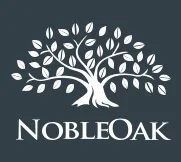
- 2025 Finder Award Winner for Best Income Protection
- Higher maximum monthly benefit available
- Covers up to 70% of your monthly income




Our insurance team has gathered 200+ quotes from 14 of Australia's most popular providers.
The shortlist below is based on 2025 Finder Income Protection Awards accounts for both pricing and features.
All the policies in this guide can pay you a monthly salary if you need to take time off work due to a sickness or injury. Remember, there's no single best income protection policy that suits everyone's needs, since we all have different budgets and priorities. The below should be used as a guide only.
Why you can trust our research
14 income protection providers analysed
100+ prices gathered
100+ hours of research
We chose TAL as the top pick for Best Income Protection because it was the 2025 winner of the Finder Income Protection Awards. It won because it has generous benefit limits, yet remains comparatively cheap.
We chose AAMI as our top pick for cheap income protection because it was one of the cheapest providers of the 11 we researched.
It was also highly commended in the 2025 Finder Income Protection Awards because it offers strong benefit limits but at a cheaper cost.
We chose NobleOak as the top pick for the highly commended category because it was highly commended in the 2025 Finder Income Protection Awards. It placed here because it has generous benefit limits that rival many of its competitors, yet it's not overly expensive.
Here are 4 features to keep an eye on when choosing the best income protection insurance for you:
This is how long you will be paid. Usually, the insurer will give you a few options to choose from – e.g. 1, 2 or 5 years. The smaller the benefit period you choose, the cheaper your policy will be.
Once you're unable to work, you can submit your claim. You'll then need to wait a specific time before your policy begins. This is the waiting period.
For example, say you submit your claim on 1 November and you select a 14-day waiting period, your policy will begin on 14 November. You will receive your first monthly payment on 14 December.
Most policies let you choose from a few different waiting periods – the bigger the waiting period, the cheaper your policy will be. If you think you can get by on sick leave for a while, it might be worth selecting a bigger waiting period.
Insurers will also put caps on the amount you can claim per month. You'll only be able to earn a percentage of your current salary (usually up to 70%).
Insurers also set a maximum monthly benefit, typically around the $10,000 mark. If you earn more than that per month, insurers such as TAL and NobleOak go up to $30,000.
Stepped premiums go up as you get older but tend to start off cheaper. Level premiums don't increase over time but typically cost more to start off with. If you're worried about payments becoming unaffordable over time, level premiums might be best for you. Otherwise, it's likely that stepped premiums will be cheaper in the shorter term.

"An easy way to reduce your income protection premiums is to choose a longer waiting period. I have my policy set at the maximum: 90 days. I figure this is for a worst case scenario and if I claim on this policy, I should have enough savings to cover me for 90 days while I wait for benefits to kick in. In the meantime, my premiums are quite a bit lower."
We currently don't have that product, but here are others to consider:
How we picked theseIncome Protection is a little complicated and a lot overwhelming. That's why we made the Finder Score, to make it easier to compare Life Insurance products against each other. Our experts analysed over 12 products and gave each one a score between 1 and 10.
But a higher score doesn't always mean a product is better for you. Your situation is unique, so your policy choice will be too. Don't think of Finder Score as the final word, but as a good place to start your life insurance comparison.
Read full Finder Score methodology
Real Income Protection Insurance has similar cover to many popular providers. However, optional extras are limited.
With ahm income protection, you can over up to 70% of your income (up to $10,000 monthly) if you can't work after sickness or injury.
Income protection can be super valuable for when times get tough. Learn the basics with our beginners guide.
Learn the built-in benefits of TAL income protection to understand how it could work for you. Compare features and get a quote today.
Find out what is and isn't covered by AAMI Income Protection and how to apply.
Read the Finder review of Zurich income protection and receive a quote based on your details. Compare Zurich income protection to other income protection policies available.
Receive income cover for illness or injury with Suncorp Income Protection.
NobleOak has been offering personal insurance solutions direct to Australians for over 137 years. Discover the benefits and features available on the NobleOak Income Protection policy and make a secure enquiry for cover.
Looking to protect your income if you suffer a serious illness or disability? Insuranceline Income Protection can cover up to 75% of your income